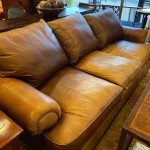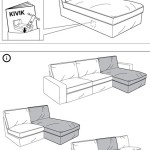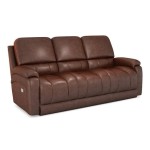Ottoman Sofa Etymology: A Journey Through Language and Design
The term "Ottoman" as it relates to furniture, particularly the Ottoman sofa, carries a rich and fascinating etymological history deeply intertwined with cultural exchange and evolving design trends. Understanding the origins of the word helps reveal the complex interplay between the Ottoman Empire and Western societies, highlighting how objects and their names can reflect broader historical narratives.
Specifically, the word "Ottoman" refers to a type of upholstered furniture, typified by a low back, often backless or armless, usually heavily cushioned, and often serving as a footstool, a seat, or even a storage chest. Tracing its linguistic roots and understanding its connection to the Ottoman Empire offers valuable insights into the evolution of furniture design and the transcultural influences that have shaped it.
The Ottoman Empire: A Cultural and Linguistic Hub
The foundation of the etymology of the Ottoman sofa lies, unsurprisingly, within the Ottoman Empire itself. The empire, which spanned from the late 13th century to the early 20th century, was a major cultural and political power, controlling vast territories across Southeastern Europe, Western Asia, and North Africa. This extensive reach fostered significant interaction with other cultures, especially those in Europe. The Ottoman Empire's influence was not only military and political, but also deeply cultural, affecting art, architecture, cuisine, and of course, furniture design.
The word "Ottoman" itself derives from "Osman," the founder of the Ottoman dynasty, Osman I. The term "Ottoman" was used to broadly describe anything related to the empire, its people, and its culture. As Ottoman culture and goods began to permeate European society, the term became associated with various objects and concepts originating from or inspired by the Ottoman Empire.
The initial furniture referred to as "Ottoman" in Europe was often a heavily cushioned, low platform designed for seating and relaxation. Backless and armless, these furnishings were often placed against walls and piled high with cushions. They were designed for communal seating and reflective of the Ottoman lifestyle, where low seating arrangements were common. This concept contrasted sharply with the more formal and upright seating prevalent in European society at the time.
The appeal of these pieces was partly due to their association with the exotic and luxurious image of the Ottoman Empire. Europeans were fascinated by Ottoman culture, viewing it as both opulent and mysterious. The incorporation of Ottoman-inspired furniture into European homes became a status symbol, demonstrating an appreciation for foreign cultures and a taste for the finer things in life.
Adoption and Adaptation in Europe
The adoption of the "Ottoman" in European design was not a simple replication of Ottoman furniture. Instead, it involved a process of adaptation and reinvention. European furniture makers took inspiration from Ottoman designs but modified them to suit European tastes and needs. This often resulted in variations in size, shape, and materials.
Initially, the term "Ottoman" was applied to a wide range of upholstered furniture, including footstools, window seats, and large, cushioned benches. Over time, the term became more specifically associated with low, backless seats covered in fabric or leather. The key characteristic remained the heavy cushioning and the focus on comfort.
English usage of the term "Ottoman" can be traced back to the late 18th century. By the 19th century, the Ottoman had become a popular feature in Victorian homes. These were often large, circular or octagonal seats placed in the center of a room and used for informal gatherings. The Victorian Ottoman was typically covered in elaborate fabrics and adorned with tassels and fringes, reflecting the opulent aesthetic of the era.
The evolution of the Ottoman in Europe also involved the incorporation of storage features. Some Ottomans were designed with hinged tops, allowing them to be used as storage chests. This added functionality made them even more appealing to European homeowners, who appreciated the combination of comfort and practicality.
The French also played a significant role in the popularization of the Ottoman. French designers adapted the Ottoman to suit the French style, often incorporating more elaborate carvings and luxurious fabrics. The French Ottoman became a symbol of elegance and sophistication, further contributing to its widespread adoption throughout Europe.
The Modern Ottoman: A Legacy of Cultural Exchange
The modern Ottoman, as we know it today, represents the culmination of centuries of cultural exchange and design evolution. While the basic concept of a low, cushioned seat remains, the Ottoman has undergone numerous transformations to suit contemporary tastes and lifestyles. The modern Ottoman can be found in a variety of shapes, sizes, and materials, ranging from simple, minimalist designs to more elaborate and decorative pieces.
One of the key features of the modern Ottoman is its versatility. It can be used as a footstool, a coffee table, an extra seat, or even a decorative accent. Its adaptability makes it a popular choice for homes of all sizes and styles. The availability of Ottomans in a wide range of colors and fabrics allows homeowners to easily coordinate them with their existing furniture.
The etymological journey of the Ottoman sofa highlights the enduring impact of cultural exchange on furniture design. The term "Ottoman" serves as a reminder of the Ottoman Empire's influence on European society and the ways in which foreign cultures can inspire and shape domestic design trends. The evolution of the Ottoman from a simple, low platform to a versatile and stylish piece of furniture reflects the ongoing process of adaptation and reinvention that characterizes the history of design.
The term Ottoman continues to evolve, reflecting the ongoing innovation in furniture design. Designers are constantly experimenting with new materials and techniques to create Ottomans that are both functional and aesthetically pleasing. The modern Ottoman represents a fusion of traditional Ottoman design principles with contemporary design sensibilities.
Ultimately, the etymology of the Ottoman sofa is a testament to the power of language and design to reflect and shape cultural identity. The word "Ottoman" carries within it a rich history of cultural exchange, adaptation, and reinvention, reminding us of the interconnectedness of cultures and the enduring legacy of the Ottoman Empire.

Ottoman Furniture Wikipedia
Why Are Ottomans Called Quora

Divan Furniture Wikipedia

The History Of Ottoman Furniture Soho Home

The Humble Ottoman Aisha Kasmir

Why Is An Ottoman Called Hedgeapple

Divan Wikipedia

The History Of Ottoman Furniture Soho Home

The History Of Ottoman Furniture Soho Home

The History Of Ottoman Furniture Soho Home
Related Posts








